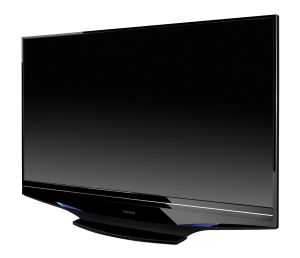Mitsubishi looks to redefine HDTV with lasers
 The company on Wednesday released further details of its laser-based high definition sets that it first introduced at the Consumer Electronics Show in January.
The company on Wednesday released further details of its laser-based high definition sets that it first introduced at the Consumer Electronics Show in January.
NEW YORK CITY (BetaNews) - Mitsubishi plans to release new models based on its new laser technology in 65" and 73" sizes, with the smaller version expected to be released in the third quarter of this year, the company said at a press event. If Mitsubishi makes that target, the 65" model would be the first commercially available laser television on the market.
Other companies have attempted to bring their own sets to the market, however none have been successful as yet. Mitsubishi claims its industry lead in the red laser market puts it at an advantage to its competitors.
Laser TV is able to produce a more crisp image as the technology can reproduce as much as 90% of the visible color spectrum. This is more than twice the capability of plasma televisions. Also, lasers shut off to produce black -- which means much higher dynamic contrast ratios, and video that looks much truer to life.
Mitsubishi representatives told BetaNews Wednesday that its display would be able to produce about 80% of the available color spectrum, and would be viewable at a 160 degree angle.
LaserVue TVs will also be 3D ready, and the company said that they will be compatible with 3D games now on the market as well as movies -- which have just now started to gain traction in the consumer marketplace. A recently announced partnership with NVidia has helped bring this to light.
The technology also requires much less hardware, which in turn allows manufacturers to produce lighter sets. For example, a Panasonic 65-inch plasma weighs in at 181 pounds, whereas the LaserVue would weigh a comparatively light 130 pounds.
Price is another factor. The same Panasonic set mentioned above currently retails for $7,000. The LaserVue set, although not officially announced, is expected to come in around $5,000 or so.
For those environmentally conscious, the television offers something there too. Operating power would come in around 200 watts: this is half the power of LCDs, and one third the power of plasma.
And yet there are disadvantages to the technology as well. One is called "speckle," and occurs when a laser beam is scattered off a rough surface. What this essentially does is cause images to be not as clear as they could be. To fix this, additional hardware is needed to diffuse it, although that can result in a less crisp picture, as well as add to the overall cost.
Another problem is the inherent danger to human eyesight caused by lasers themselves. Proponents argue that this isn't a problem in laser televisions because of the diffuser elements used, but independent evidence to back this up has yet to come to light.
Either way, Mitsubishi is looking to continue to march forward with laser technology, continuing to make a name for itself on the high end of high-definition televisions.
"Mitsubishi has created a new category in television with laser technology, and now we have created an exciting new brand that we believe consumers will come to equate with the industry's best performing televisions," its marketing chief Frank DeMartin said.
